
In the land of sunshine and rainbows, having a reliable ecommerce CRM is all you need to get your spot on Google’s highly-coveted top three search results.
Once your pages rank, you’ll see loads of traffic pour into your website every single month and your sales could easily skyrocket.
And if you’re lucky, you’ll be the talk-of-the-town during family gatherings, with your cousins getting star-struck with your sheer awesomeness. #MentalHighFive
Sigh…
If only that were the case…
To rank on the search results, you need to build links, optimize your pages for the search engines, etc.
Of course, you need airtight content as well, the likes of which the search engines and your readers will love. Without it, you’ll be hard-pressed to rank on relevant keywords — those that will bring you sales.
Sadly, creating this type of content isn’t easy to come by. You need to know what you’re doing, otherwise, your content won’t have enough gusto to make the search engines love you.
To help you with your content, here are four crucial tips that you can follow.
Table of Contents
1. Know your Audience
It might sound like a cliche, but knowing who your target audiences are will always be vital to your SEO content strategy.
Think of it this way.
When you understand your ideal buyers, you’ll know what they’re looking for, their pain points, and how you can tailor your content to address their needs and optimize for search engines.
To learn your target market better, you can start by developing a buyer persona that best represents your ideal customers.
HubSpot’s Make My Persona tool, for instance, can help you create fictionalized profiles of your ideal buyers that include demographic data such as gender, age, occupation, and more.
Here’s a sample profile created from the tool.
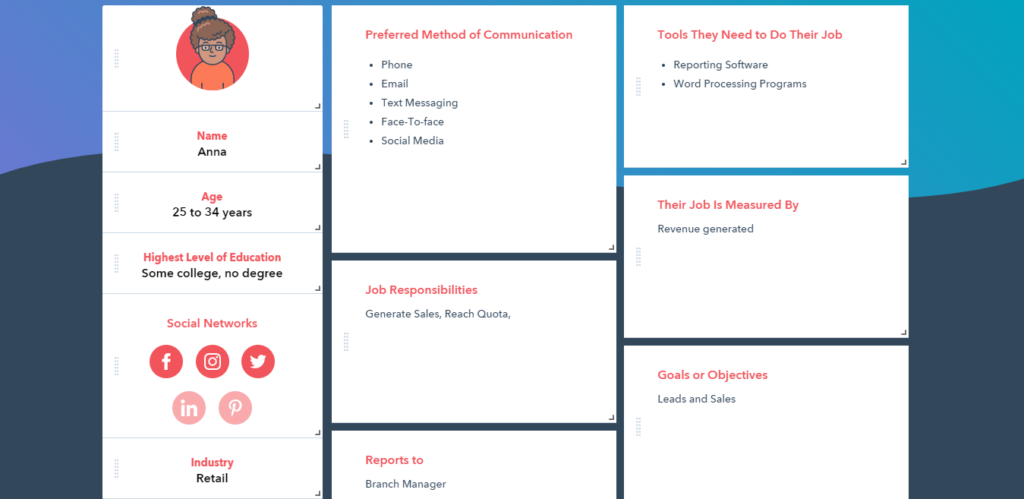
By understanding your ideal customers, you can get insights about their interests, buying behaviors, concerns, and topics they have when looking for products such as yours, and more.
2. Do keyword Research the Right way
It’s crucial to know the terms your target audience is looking for online for your SEO strategies.
To ensure you’re optimizing the right ones for your content and generate website traffic, though, you’ll need to do keyword research.
However, to make the most out of your SEO content strategy, you’ll need to do keyword research the right way to help you find not just relevant terms, but highly-targeted keywords.
An excellent approach is to apply SEO basics for small businesses and choose keywords to optimize for that will lead your target audiences to your content.
You can use keyword research tools such as Ubersuggest to get insights about the keywords you want to use in your content.
The tool will show you information about the keyword’s number of monthly search volume, SEO difficulty, and even the age range of the people who search for the term.
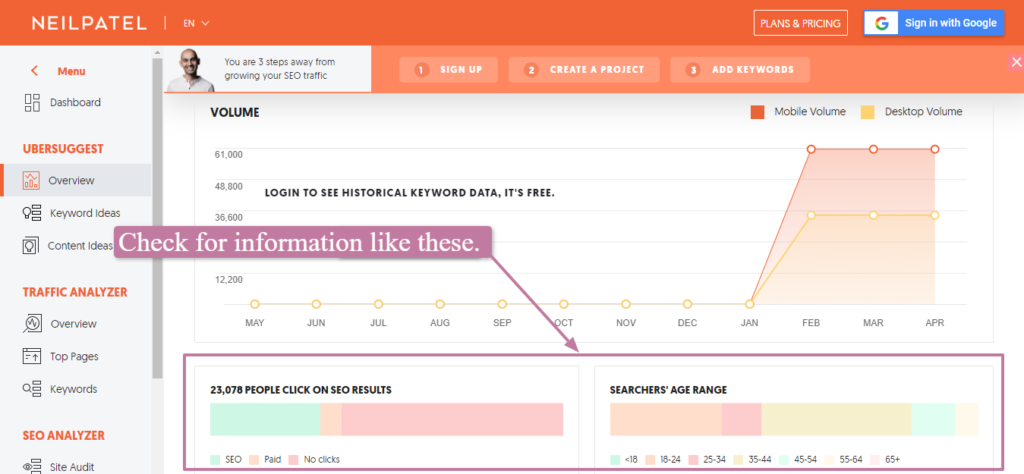
The tool also provides other information such as the keywords that people type into Google, including their monthly search volume.
Plus, you can get content ideas with the titles that show in Google search for any given URL, including the estimated monthly traffic the pages receive for the particular keyword.
Doing keyword research to uncover highly-targeted keywords can help you create better SEO optimized content — which makes it easier for your target audience to find your content and you’ll drive more relevant traffic to your ecommerce website.
3. Create insanely relevant content
Whether you’re learning how to start a blog or if you’re a pro at producing videos, social media posts, and more, it’s always a great idea to create different types of content in many channels.
However, the success of your SEO content strategy doesn’t just rely on the various kinds of content you can publish across different platforms.
To encourage customer engagement, your content needs to be as relevant to your readers as possible — along with strategically placed keywords — so you don’t waste your efforts and, in turn, increase your website traffic and convert visitors into customers.
To help ensure that your content provides value to your audience and addresses their problems, here are a few things you can consider.
- Speak like your target readers. Creating content that uses the right attitude and tone as your audience can help you connect with them better.
Your message should be clear, but using language or even slang that your audiences use can make your content more appealing and relatable.
- Keep up with the latest trends. Creating content about the most recent topics that your audiences are interested in can also help keep your SEO optimized content stay fresh.
You can use tools such as Google Trends to get ideas about the most recent buzzworthy topics that people are looking for online.
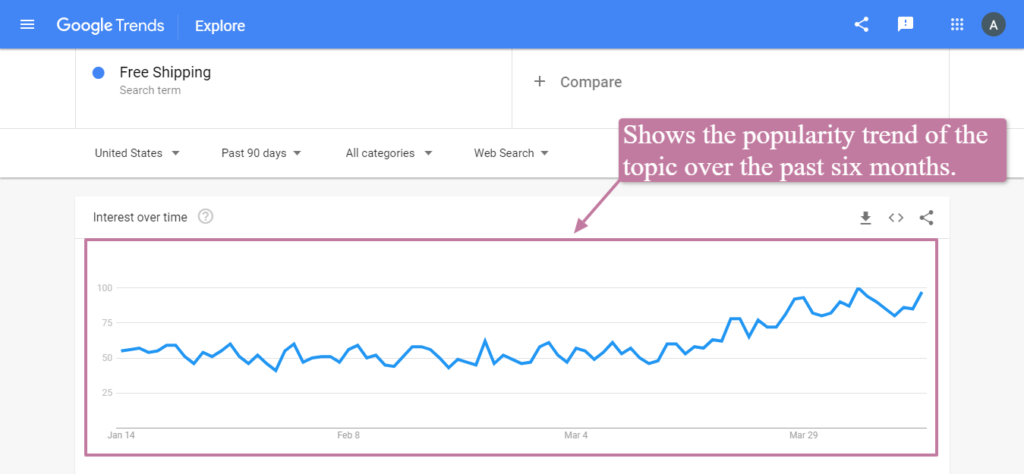
- Use visually appealing content formats. How you present your content is also vital to help your audience consume your content easily.
A great way to do this is by tailoring the design of your content based on the formats of previous posts that your audiences best respond to — including page elements, font styles, color, and more.
4. Check, analyze, and reassess
Many factors can affect your chances of driving significant traffic to your website and ranking on SERPs. You need to optimize for mobile-first indexing, improve your website speed, build links, etc.
Unfortunately, your content strategies aren’t something you can set and forget.
If you want to keep your competitors from outranking your content, you need to stay on top of your content updates.
A great approach is by analyzing your content performance through an SEO audit to check what’s working to help raise your traffic and conversions — and what’s not.
Through an SEO audit, you can determine the type of content your site visitors want, observe issues in your content and strategies, do technical spot checks, and more.
Doing a complete SEO site audit can be time-consuming and intensive, but you can also use automated tools to help you with the process.
SEO audit tools, such as SemRush, for examplecan crawl your website.
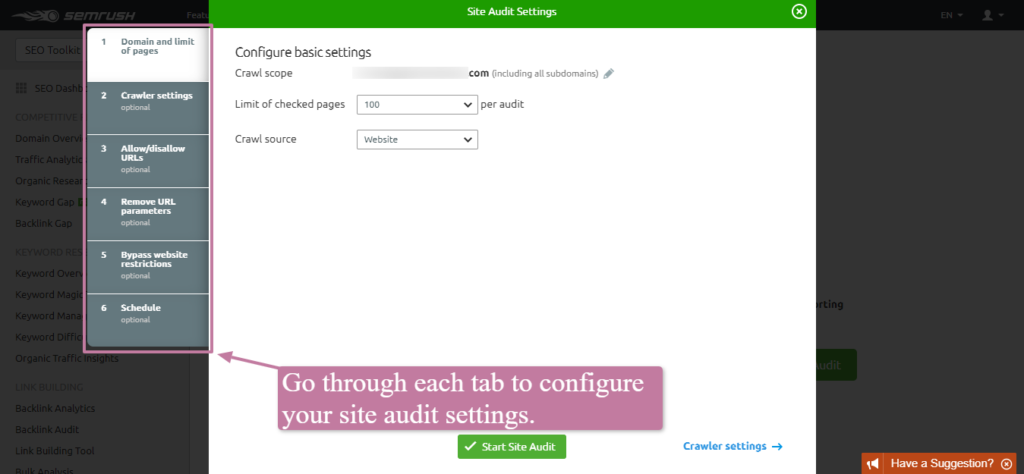
With automated site audit tools, you can find remaining or any hidden issues — including meta tags, HTML tags, security protocols, duplicate content, and more.
Constantly checking, analyzing, and reassessing your content can help refine your SEO strategies, improve your older content, and implement fixes that are hindering your existing efforts from succeeding.
You can also add schema to your pages so it’s easier for Google to understand what they’re about.
For example, I checked this page about virtual summits using Google’s rich results text page to see if it has an article schema. Here’s what it showed.
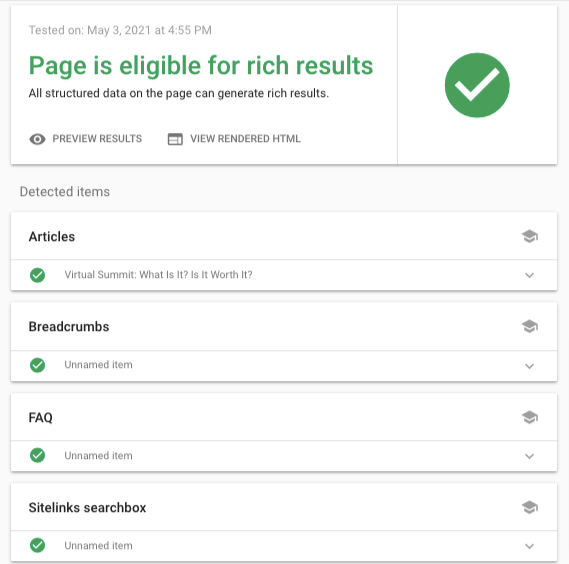
As you can see, it has an article and an FAQ schema, making it very easily understandable to the search engines.
There are several schemas you can add on your pages such as:
- Breadcrumb schema
- Article schema
- Product schema
- Recipe schema
- Etc.
Bottomline
Implementing an SEO content strategy can be a complex and labor-intensive endeavor, but it can give you long-lasting and valuable returns, plus help you get tons of high-quality traffic.
The techniques mentioned are just the tip of the iceberg, but you can use them as a starting point to expand your efforts.
What other SEO content strategies do you think will draw in website traffic? Let us know in the comment section below. Cheers!